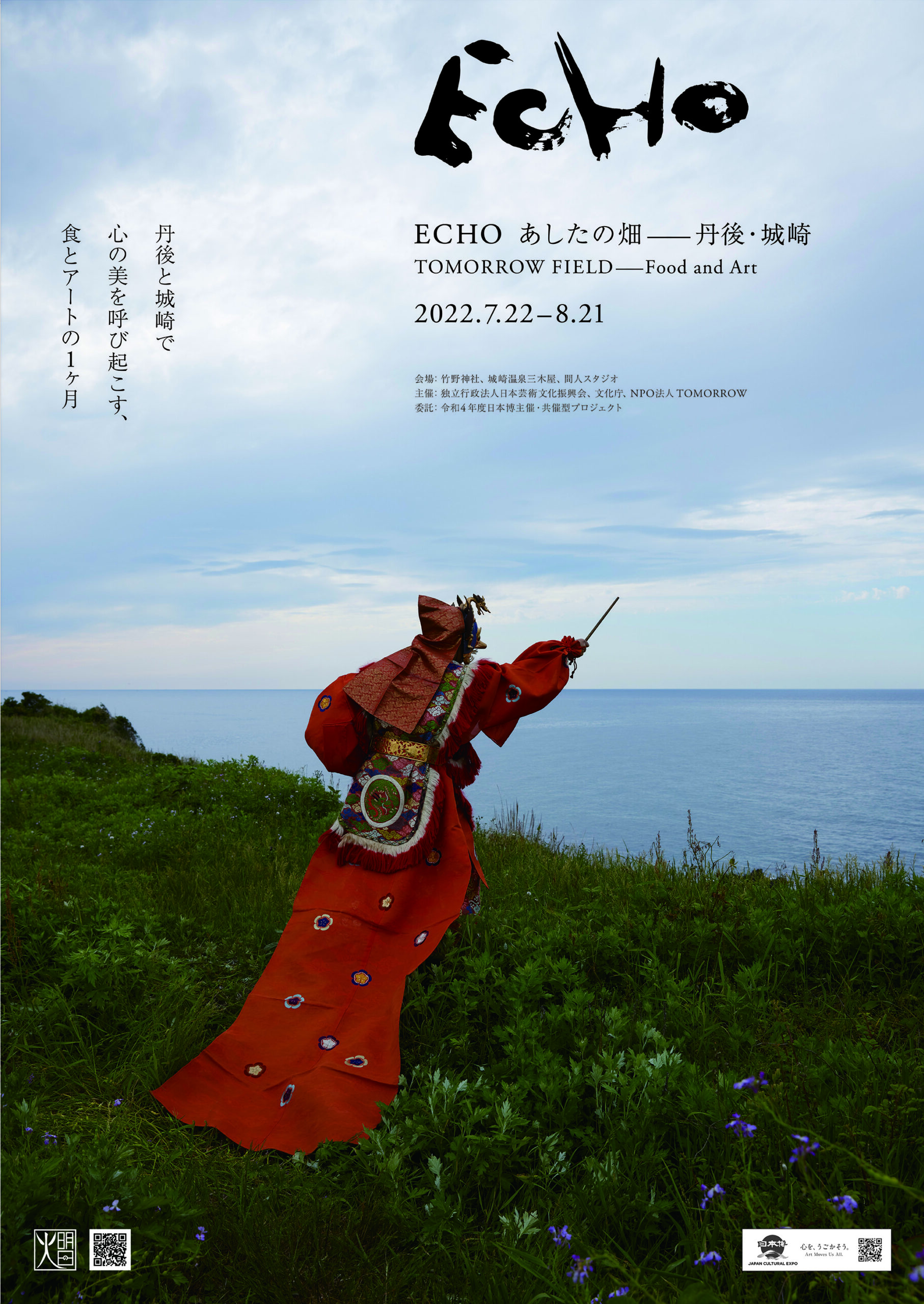
ECHO TOMORROW FIELD―Food and Art
Carrying thousands of years of history, the Sea of Japan and the fertile land along its coast are home to harbors that have welcomed people from the mainland, as well as a natural mix of fields for growing crops and rice and tombs and other ceremonial venues. Steeped in the past, this landscape watches us, here in the present. As a backdrop to this journey between birth and death that we call life, these plains have generated layer upon layer of history, a record of the intermingling of people and the natural world, where the ocean meets the sky.
The central theme of ECHO is the voice of the heart, as heard resounding through the borderless plains upon which artwork is experienced, the very spirit TOMORROW FIELD seeks to embody. The idea behind this labor of love is to make Tango a place that resonates with local residents and people visiting from elsewhere in Japan and overseas by building a team of stewards to support our efforts and perpetually fostering the aesthetic development of the next generation, through immersion in fine art and gorgeous natural settings.
<Exhibited Works>
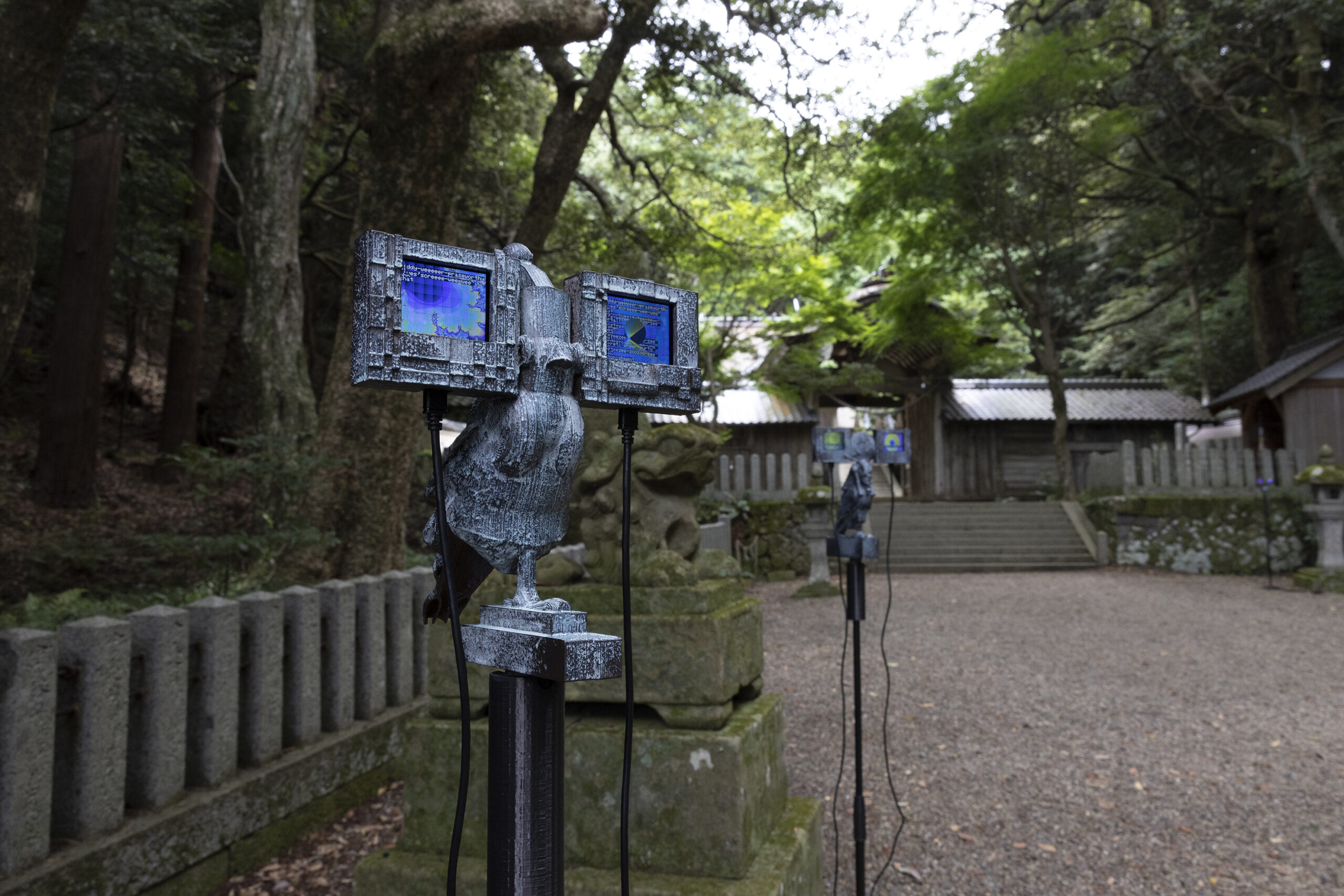
Samson Young “The messengers”
Generative videos (durational variable), acrylic on 3d-printed PLA, repurposed mic-stand, repurposed texts (English translations of K’ang Hsi’s Sacred Edicts, Prince Shotoku’s jūshichijō kenpō, the Precepts of Ptahhotep), LCD screens, custom software Set of 6, dimensions variable
Three-dimensional works incorporating videos will be exhibited on the approach to the central gate leading from the third gate of Takano Shrine to the main shrine. The six sculptures entitled “The messenger” are, so to speak, sound installations without sound. A random autonomy process by software projects images that continuously transform as if they resonate with the surrounding forest.
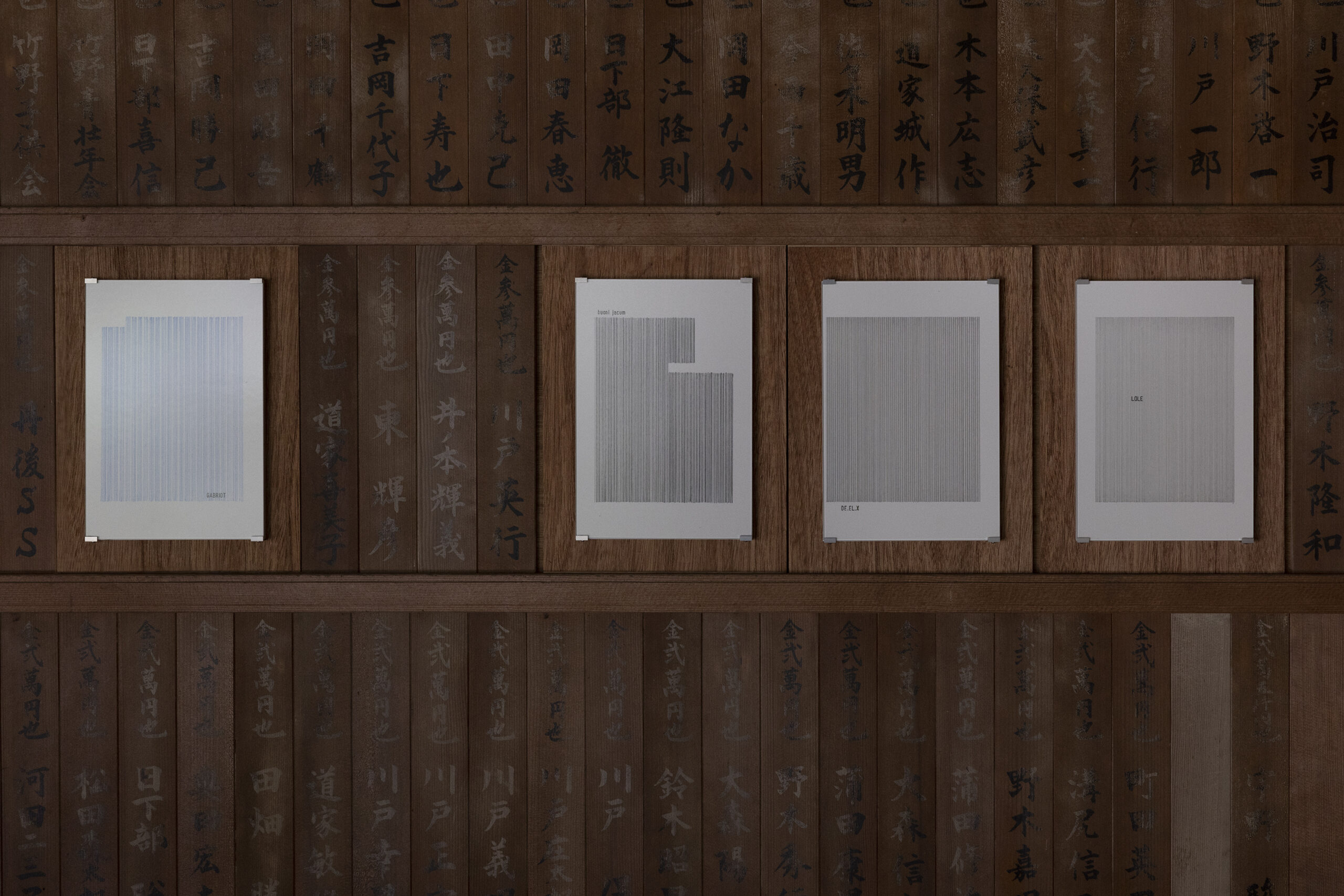
Samson Young
《Old Spells (LOLE: avoidance of being taken prisoner, Old Spells (DE.EL.X: conscience purification), Old Spells (buoni jacum: the adversary will not find its target), Old Spells (GABRIOT: for a horse to carry you easily)》, color pencil on paper
《DAO (luminal spaces), DAO (to fell what holds the frame)》, ink, color pencil, pastel and stamps on paper
At Emaden next to the central gate, drawings inspired by ancient spells and sound drawings are exhibited as if to guide the six messengers.
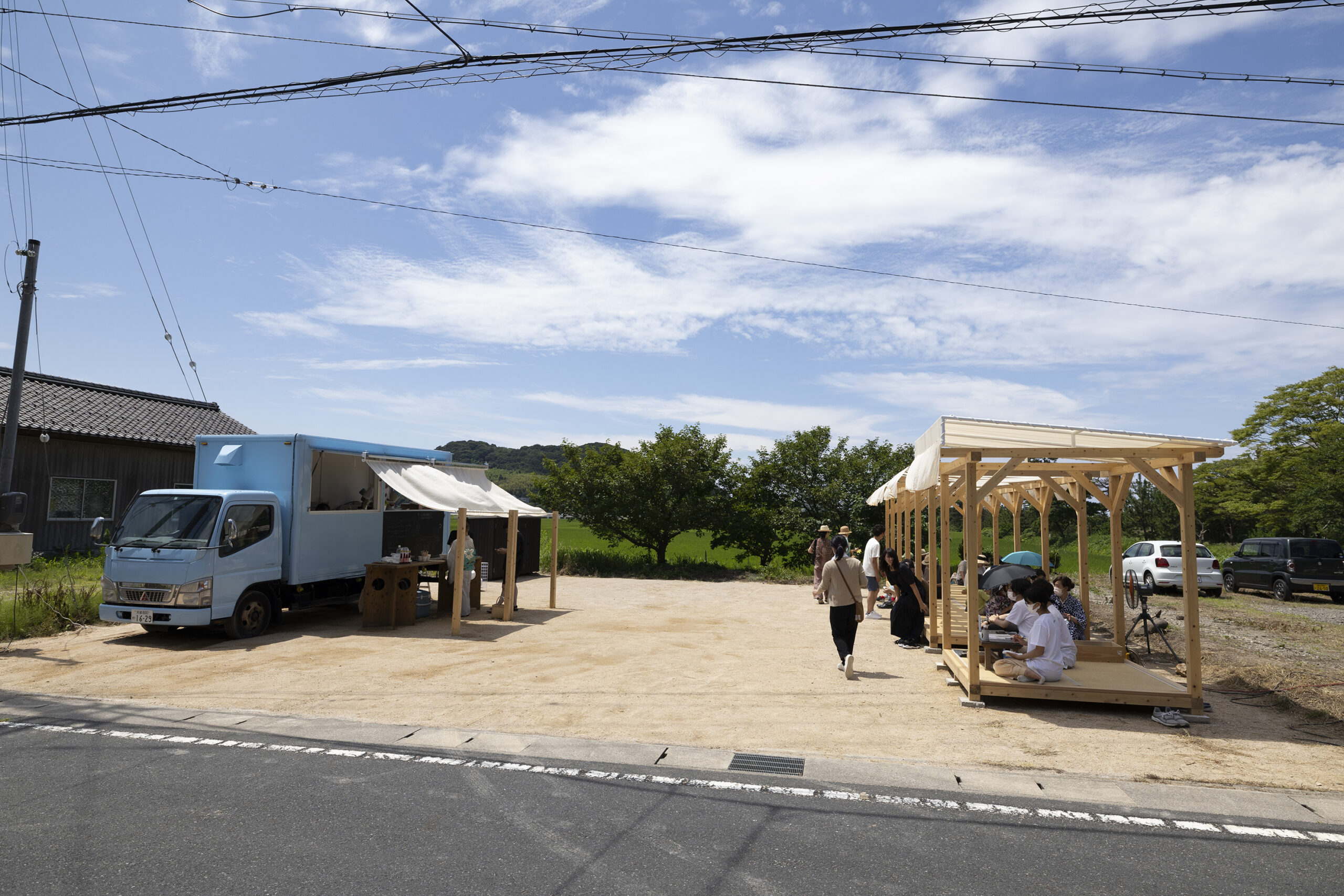
Yoko Ando “Shade sail”
Tango chirimen (silk crepe)
Using Kibata, a gray fabric woven from Tango Chirimen, Ando created sunshades for the Food Festival venue. The fabric is treated with a water-repellent finish before the sericin is removed, and is sawn in the same size as the weave width. This becomes one of the challenges of ECHO, which aims to create a space and venue that uses natural material as much as possible.
Venue configuration: TOMORROW (supervisor: Office of Ryue Nishizawa)
Our goal is to make the most of our brief time on earth, supporting the creation of artistic efforts that inspire gravitas and gratitude by bringing different industries and different cultures together in one space. We want Taiza to become a laboratory of sorts, constantly brimming with activity. To this end, we will be hosting an outdoor installation centering on food (a dining experience that blends artistically minded architecture and environmental installations) from July 22nd until August 21st, as a space where food and art and the community can intermingle.
Once the pandemic is behind us, TOMORROW FIELD hopes to establish an artist residency, as one way of putting our dreams into practice, in order to support the creation of works of art that inspire hope and well-being in the coming generations by providing creative individuals working in art, food and music, especially those visiting from overseas, with space to develop their ideas and interact with the community.
For artists and those who appreciate art alike, standing in awe of creativity is an essential part of how we, as a global culture, can begin to move beyond the frozen state caused by the pandemic, in which survival poses the ultimate distraction. ECHO endeavors to create spaces that bring people together, through involvement with the arts in all its myriad forms.
As we approach the summer of 2022 and the launch of ECHO, we find ourselves at a time in human history when we must find a way to live amid the stresses of late-stage capitalism and environmental degradation, fueled by such self-serving greed it makes one question whether this is all a dream. Nevertheless, we devote our precious time on this mysterious planet we call Earth to making the world a better place, to leaving it in suitable condition for the coming generations, to creating opportunities for people to connect through artistic activities, and to supporting each other in our efforts and expressing our appreciation through a variety of programming.
OUTLINE
DATE: Friday, July 22 – Sunday, August 21, 2022
HOUR: 10 a.m. to 4 p.m. (Takano Shrine, Taiza Studio)
VENUES: Takano Shrine (249 Taiza, Tangocho, Kyotango, Kyoto), Kinosaki Onsen Mikiya (487 Yushima, Kinosakicho, Toyooka, Hyogo), Taiza Studio (2854 Taiza, Tangocho, Kyotango, Kyoto)
ORGANIZERS: TOMORROW, Japan Arts Council, Agency for Cultural Affairs, Government of Japan
Under the Auspices of: Kyoto Prefecture, Kyoto by the Sea DMO, Kyotango City
FY 2022 Japan Cultural Expo Project Presented and Co-presented by Japan Arts Council and Agency for Cultural Affairs, Government of Japan
<Exhibited Works>
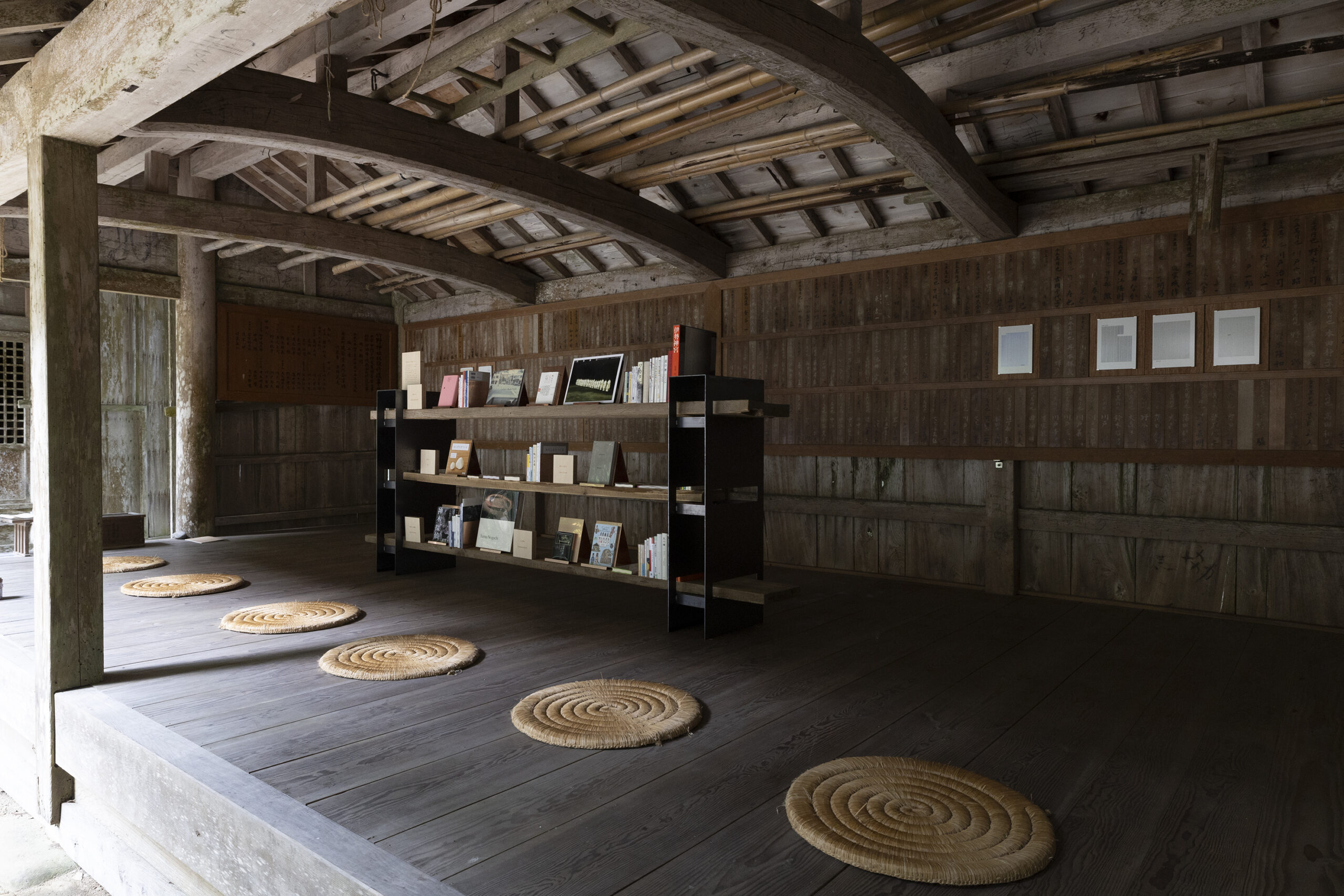
Yoshitaka Haba “Library”
Reclaimed wood from Takano Shrine, copper, book
Haba selected books that have been handed down from generation to generation at Takano Shrine, the only shrine in the area, and created a pop-up library during the exhibition. Visitors can learn not only about history but also about Tango and connection between Tango and the world from various view points such as food, religion, architecture, and culture. The bookshelf was made by combining reclaimed wood from Takano Shrine.
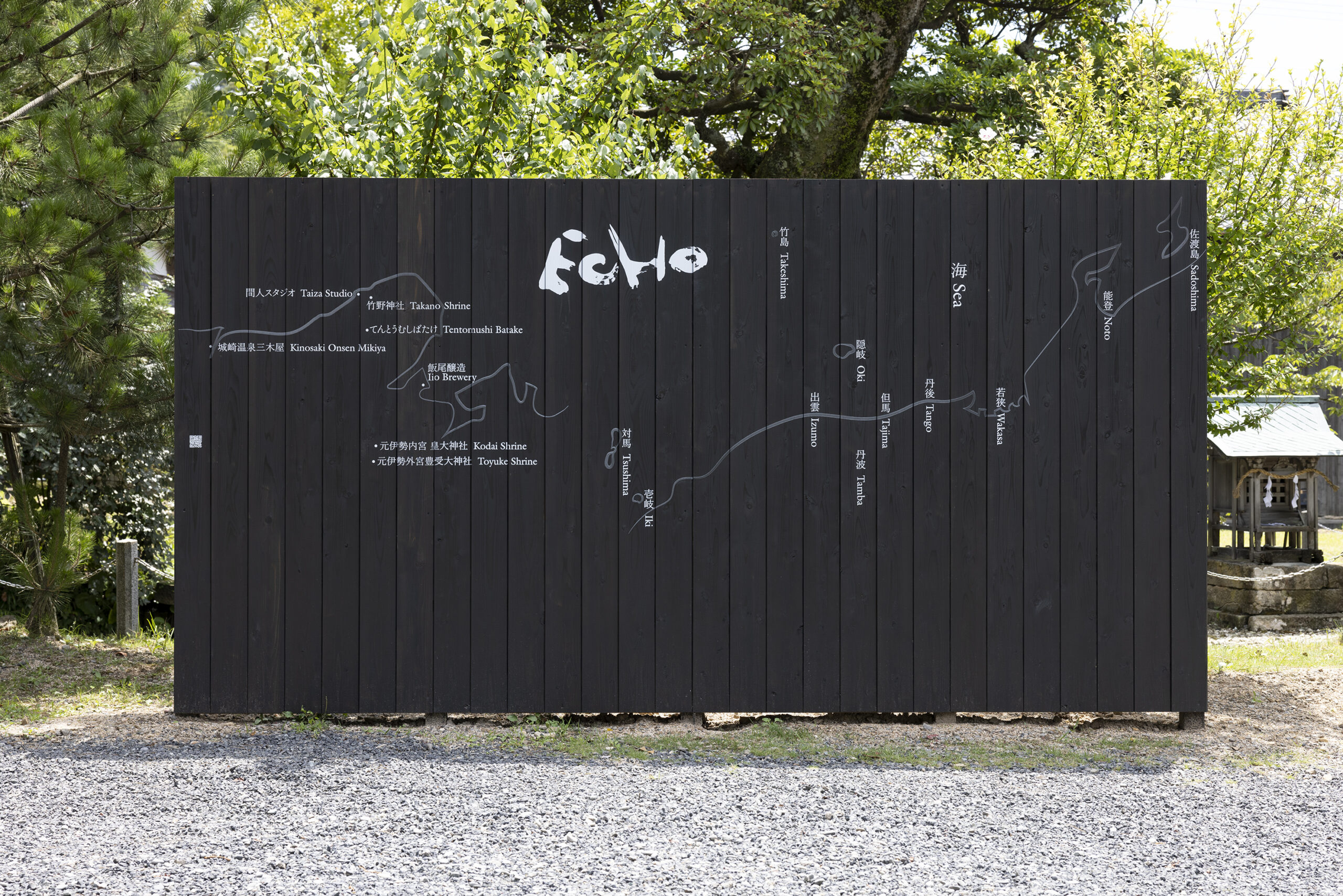
Yoshihisa Tanaka “Map”
UV print on cedar board, 180 x 360 cm
A map showing the relationship between the venues of ECHO in Tango and Kinosaki area, and the positional relation with the sea and continents. The black cedar board inspired by Yakisugi (Shou sugi ban) used in villages along the Sea of Japan was selected as the material. It was set up at the entrance of the exhibition so that visitors can visually grasp the relationship between the place where they stand and the regions of Tamba, Tango and Tajima that once formed a cultural area.
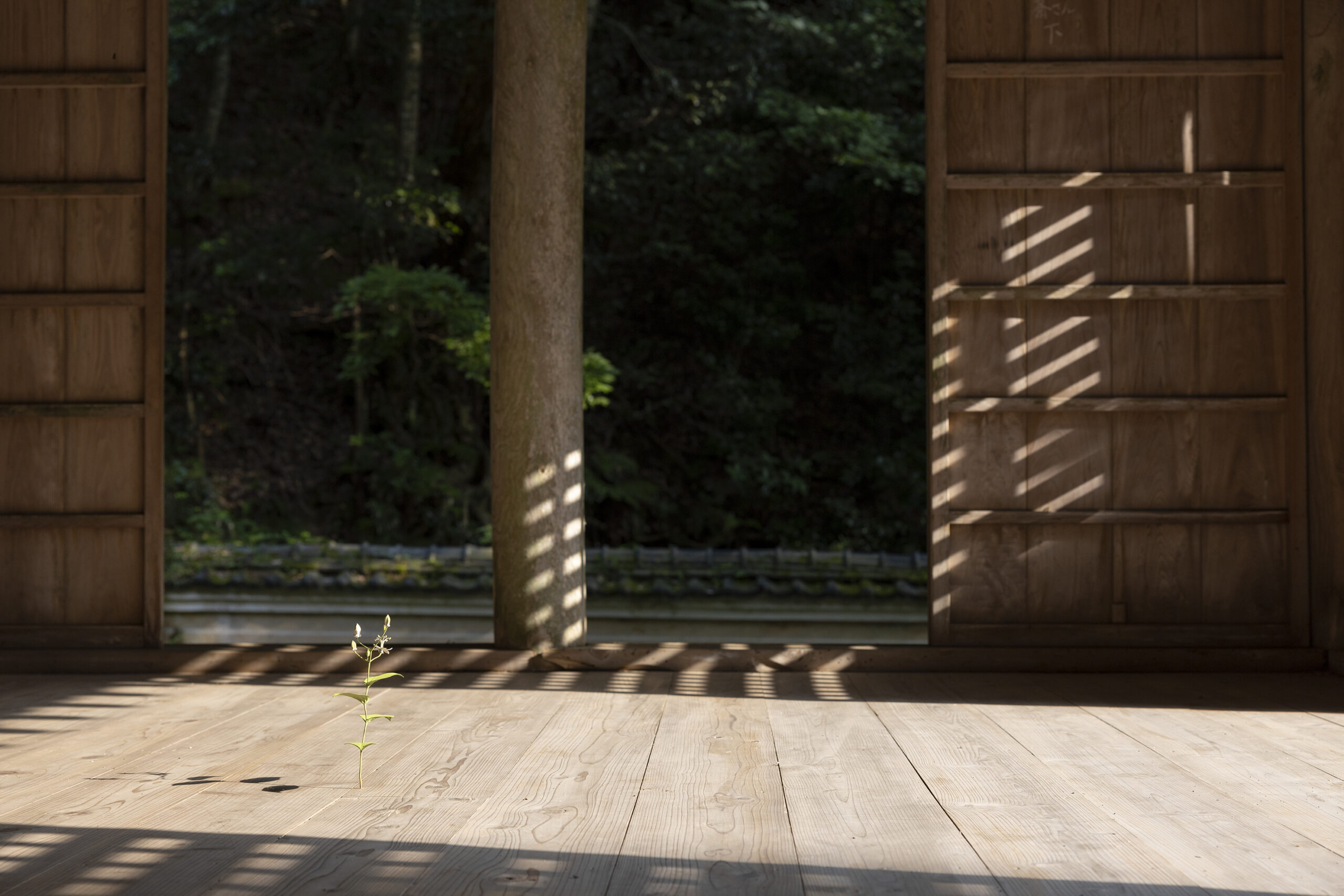
Yoshihiro Suda “Toad lily”
painted on wood
Inspired by Toad lily that blooms at Takano Shrine, this work is exhibited in the hall of worship in the form of a dedication to the main hall. The toad lily (Hototogisu), which is native to the Korean Peninsula and Japan, has been loved as a prestigious flower like the lesser cuckoo (Hototogisu), which has been regarded as a “sacred bird” since ancient times. It reminds us of the connection between the continent, Japan, and the land of Taiza, similar to the Gagaku devoted in the hall of worship.
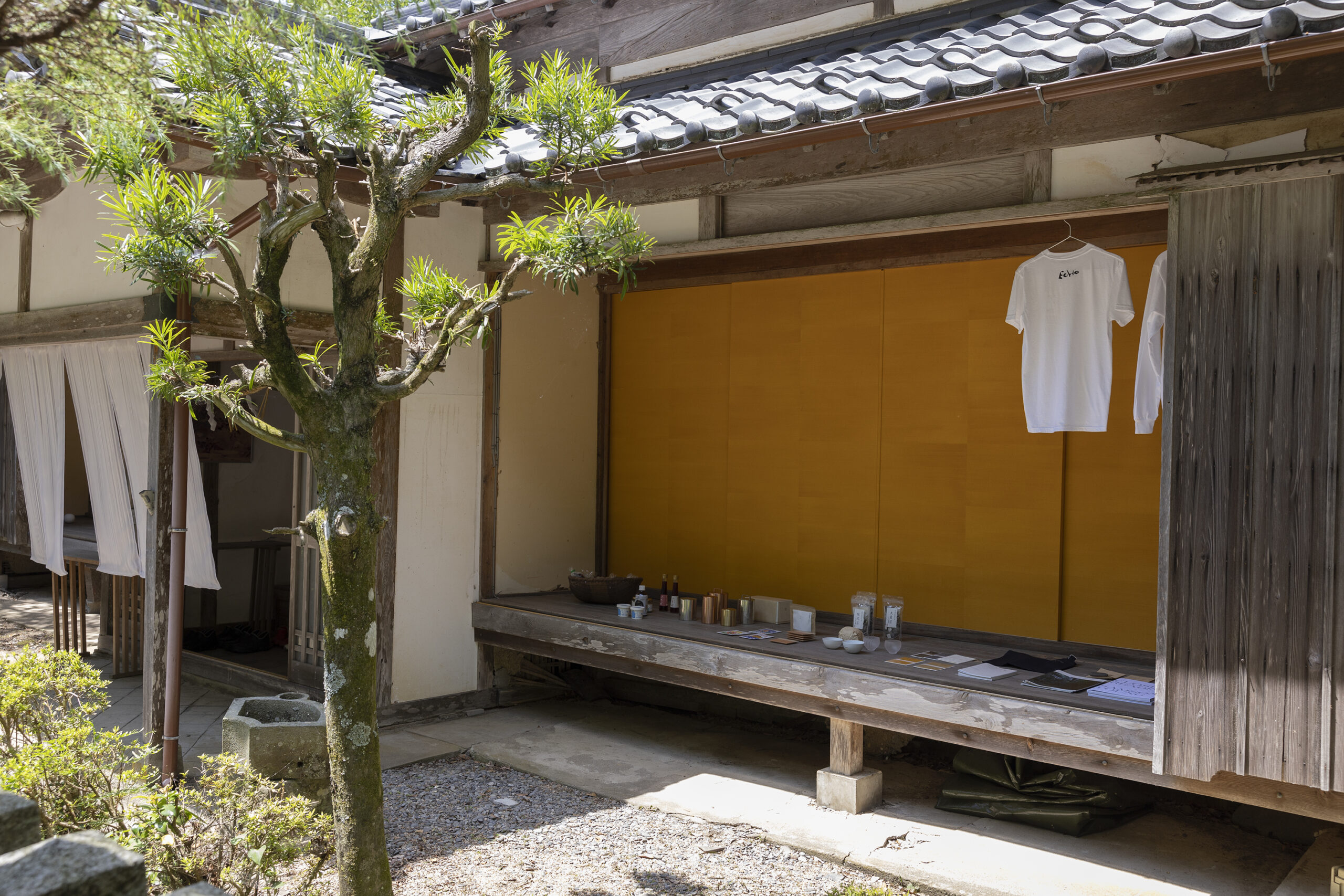
Koh Kado, Yoshihisa Tanaka “Fusuma (sliding screen) of Taiza Paper”
Taiza paper (soil of Taiza)
The original paper of TOMORROW FIELD, “Taiza paper” made by mixing soil of Kyotango was made into fusuma (sliding screen) paper by applying “gubiki” using the same soil as a pigment. This is the first step in an attempt to develop the material of paper that the artist Tanaka and Karakami artisan Kado have expanded its possibilities. In addition to the sliding screen, “Taiza paper” is also used as a wrapping paper for the market.
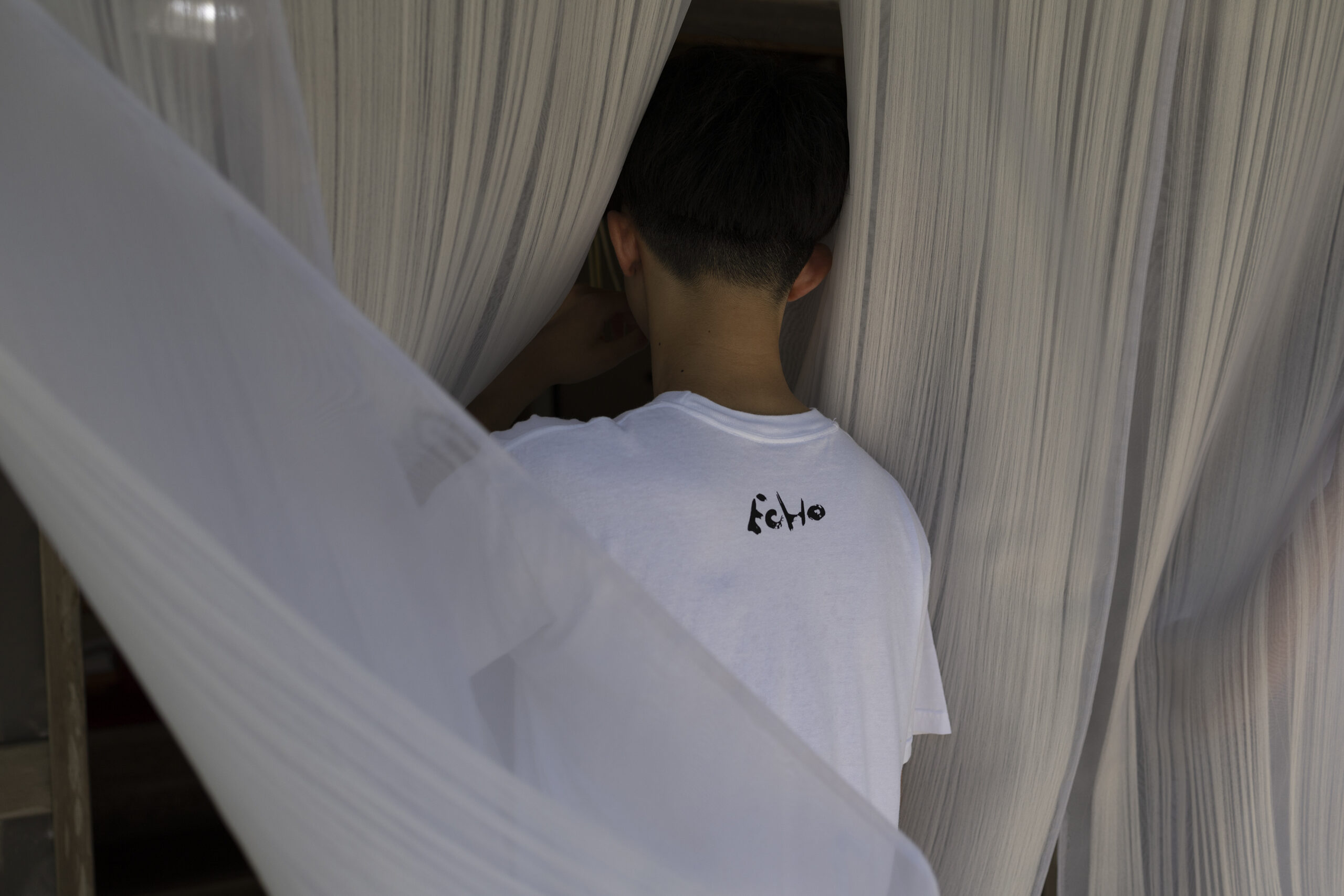
Yoko Ando ““Noren (silk curtain)”
Tango chirimen, organdy
The water-powered silk throwing method of wefts is one of the characteristics of Tango chirimen (silk crepe.) Ando visited the textile factory in Kyotango (Tayuh) and encountered the scraps produced during the “moving of wefts” that changed the wefts in the production process, and regenerated them as material for her work. The silk thread, which was breathed in again, was covered with an organdy in a faint purple color.
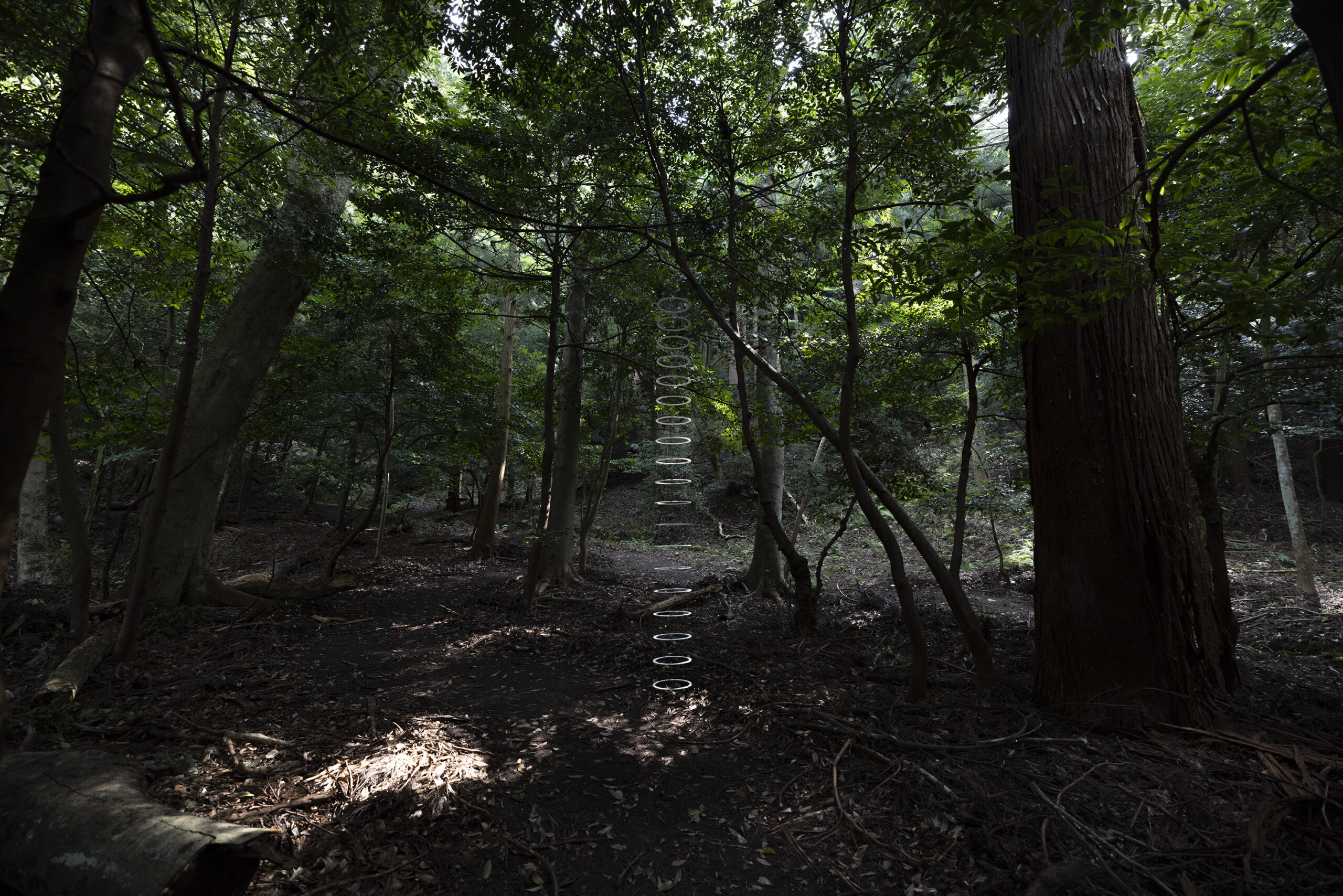
Akio Niisato “Echo”
white porcelain
The sacred forest that has been preserved since ancient times are handed down to the shrine, which is normally closed to the public, along with a shrine filled with people’s prayers. There is a reverberation between nature and humans, so that posterity will receive the thoughts of the people who lived there. From the relationship between the material and body of the artist, the place and the artist, and the other works in the sacred forest, ripples appeared as a continuous ring and began to correspond to the breath of the forest.
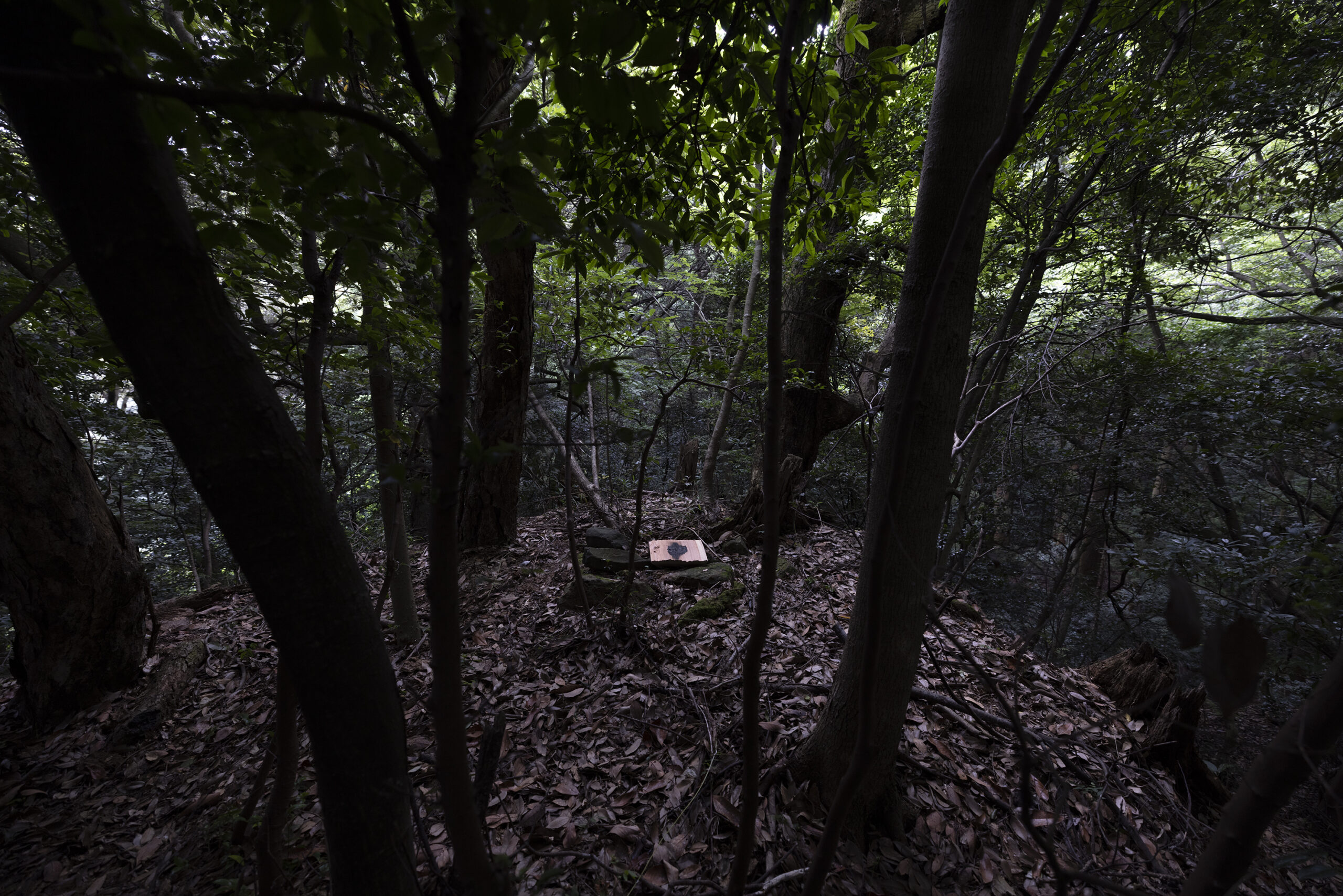
Satoshi Sato “Memory”
cedar (branded with glass on the cedar board by Shuji Nakagawa)
A shrine for Atago (fire god) once existed in the sacred forest to the south of the main shrine, and we can still see its traces. This work was created by baking the glass that had just been taken out of the kiln onto a cedar board by Shuji Nakagawa. It is a kind of collaborative work between the artist who works on glass that reminds us of the flowing time, and the artist who handles the ever-changing material of wood.
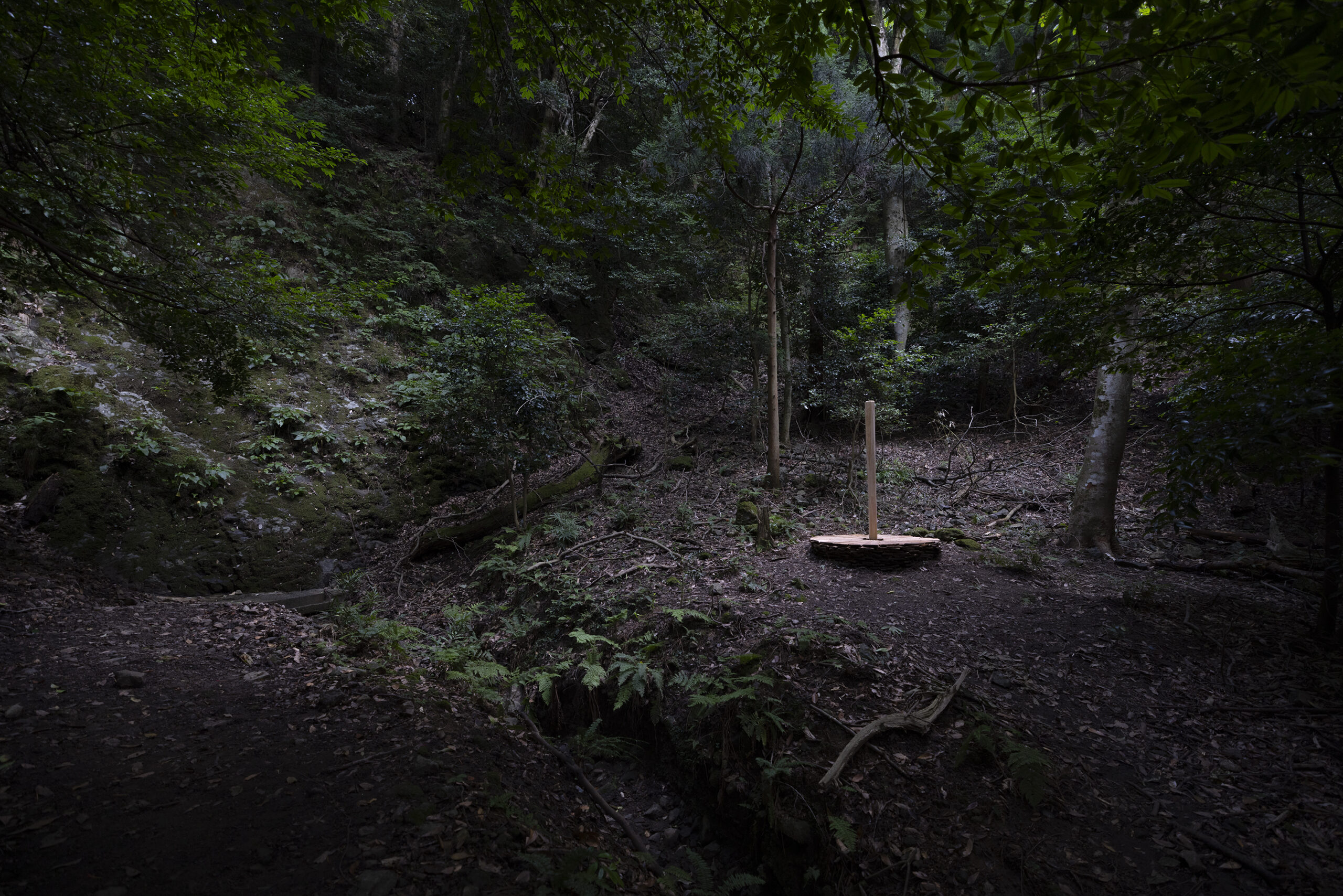
Shuji Nakagawa “shin”
cedar, cypress
There was a shrine of the water god in the sacred forest of the Takano Shrine. The waterfall once flowed on the surface of the rock and even now it reappears after the rain. A shrine enshrining the fire god was also found in the sanctuary. Nakagawa came to the Yin-Yan, and was strongly aware that like heaven and earth, sun and moon, fire and water, nature and human beings are formed by confronting and depending on and responding to each other.
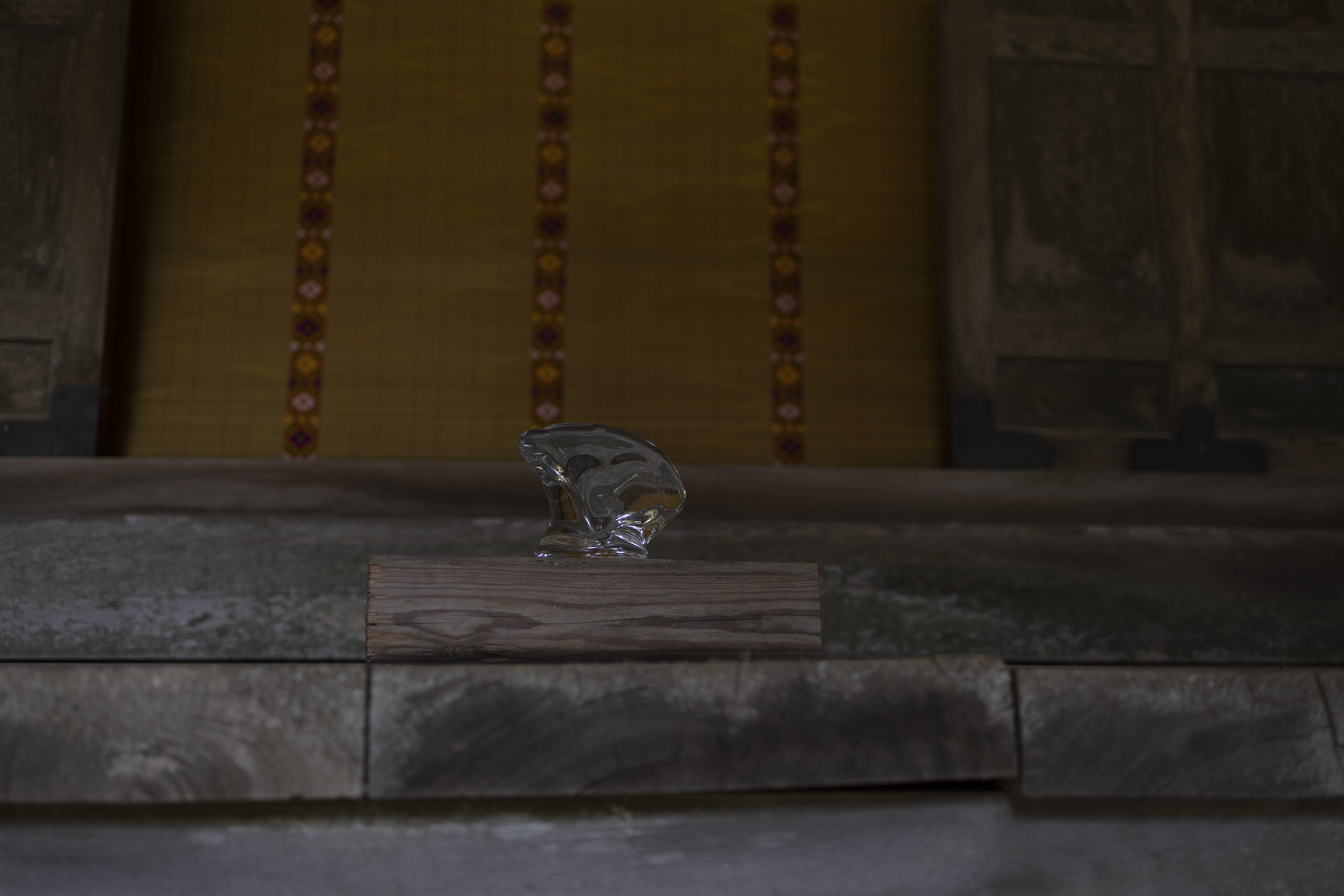
Sato Satoshi “Prayer”
glass
This is a glass work generated from the production process of “Memory” and was dedicated to the main shrine. Just as the cedar board retains the memory of hot glass, the time that the cedar board contains is transferred to the glass. It also leads to the artist’s recent attempt to bring out the free and natural shapes of glass like water and air.
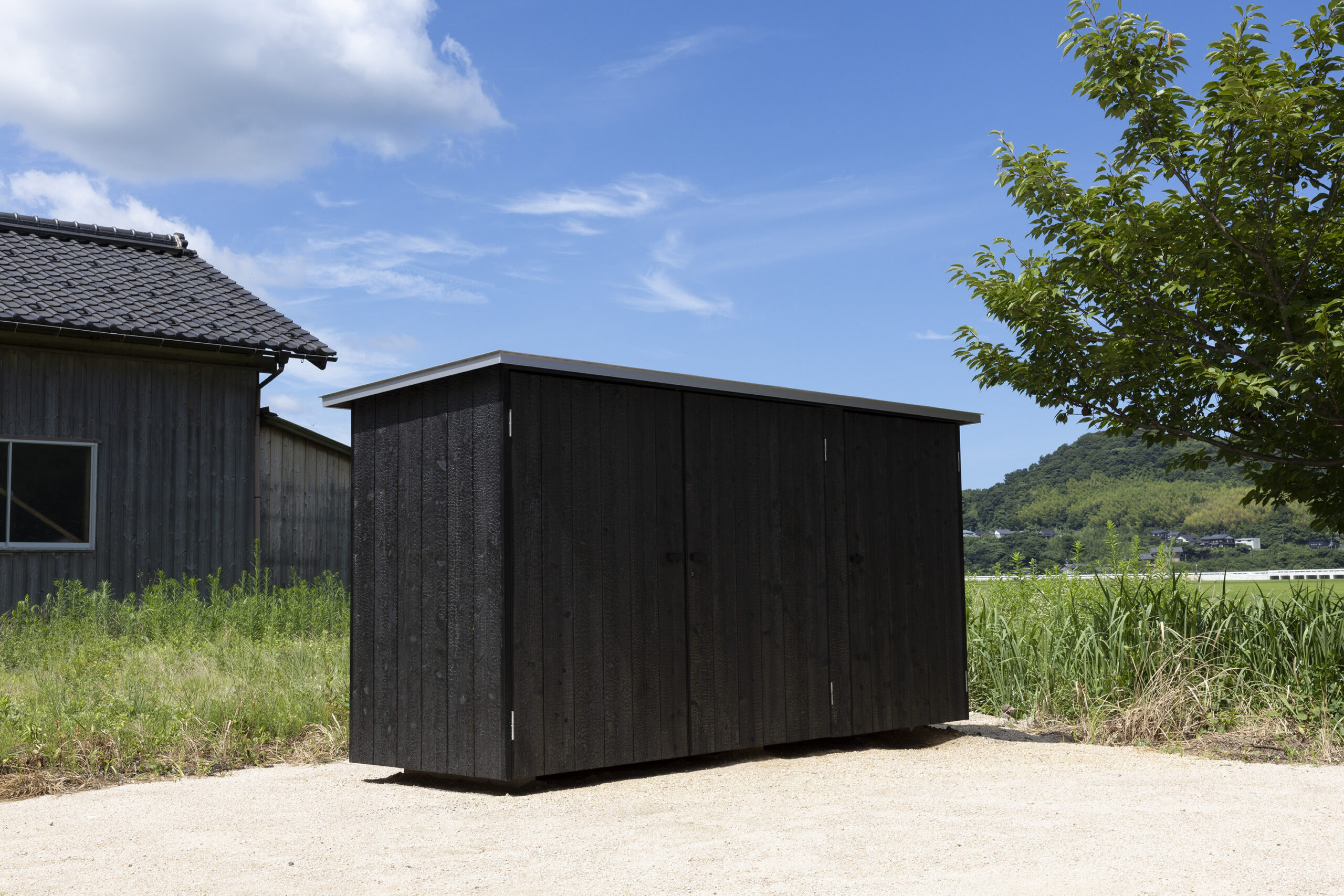
Office of Ryue Nishizaawa “Store house”
cedar and plywood, H1.65 × W3.2 × D1.0 m
A store house by Nishizawa, who supervised the venue configuration for the Food Festival, which is the core of the ECHO. By using Yakisugi (burnt cedar,) which is also used in the houses in the Miya area around the venue as a building material, it blend in with the scenery.
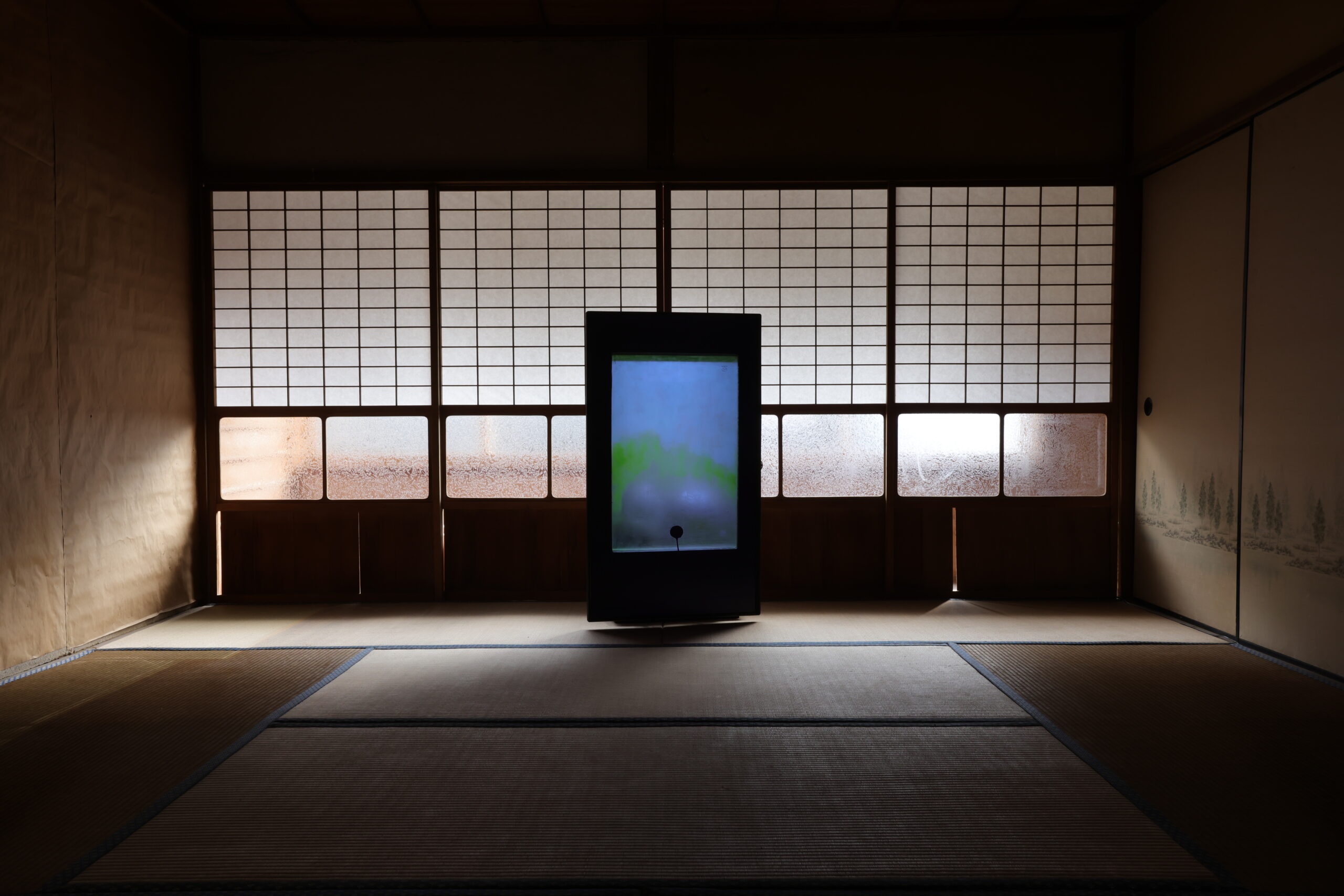
Samson Young “Reasonable Music (Lyrica)”
Music composition for viola; detuned viola, triangle and synthesised glass harmonica; soft pastel on recording isolation booth, Performed by William Lane documented as a single-channel video with stereo sound, 17’03”
The recording of a composition written by the artist for the violist William Lane. The composition is designed to be performed from inside a recording isolation booth, while a single audience member listens through a contact microphone attached to the booth’s window. The composition, while lyrical in nature, features instruments that were once believed to cause mental illnesses, notably the glass harmonica, the triangle and strings, with the viola. In parts of the composition, the violist performs a reluctant duet with himself, whistling and bowing at the same time.
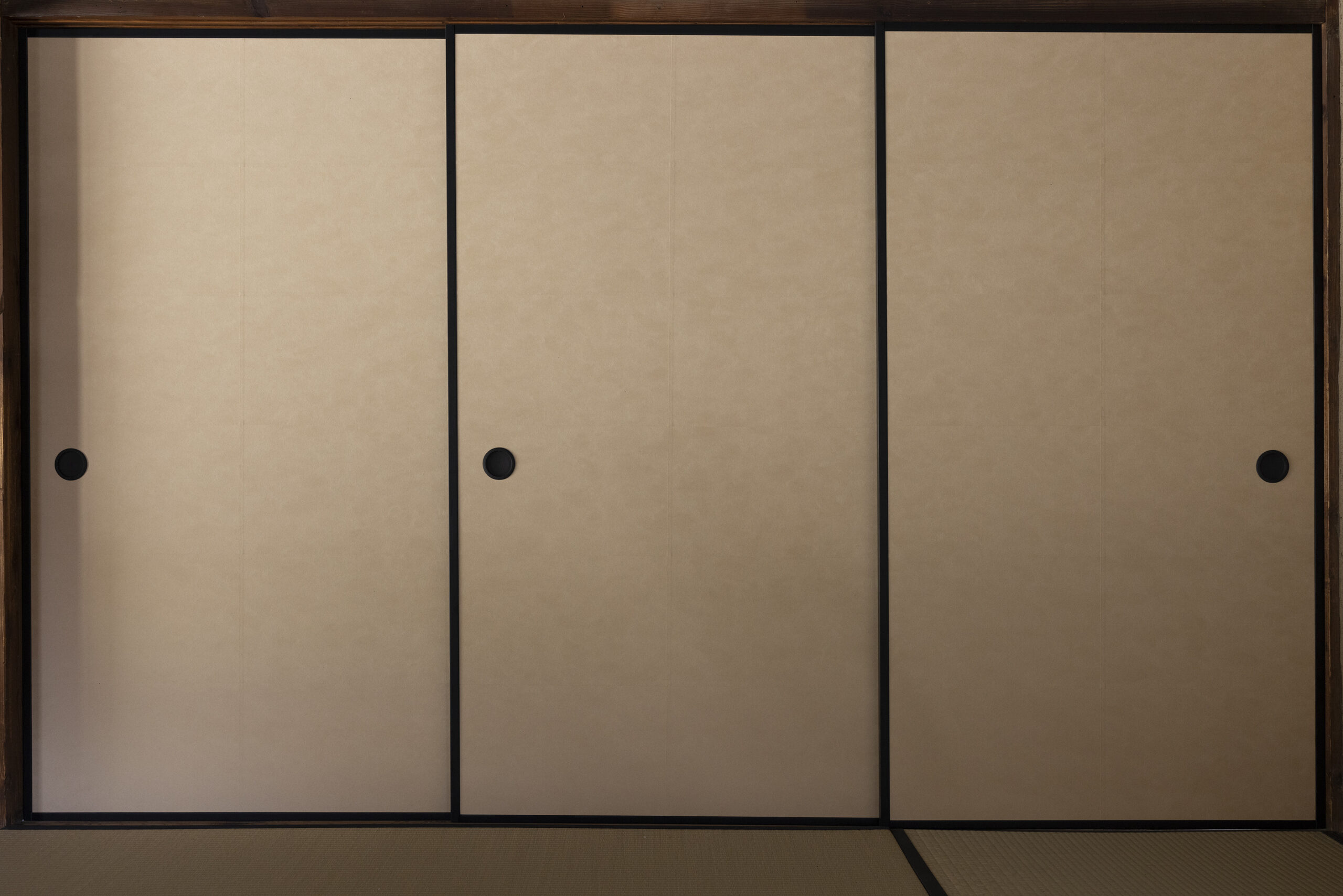
Koh Kado, Yoshihisa Tanaka “Taiza Paper”
roll of Taiza paper
The fusuma paper is TOMORROW FIELD’s original Japanese paper, Taiza Paper, which is mixed with soil of Kyotango found through fieldwork. It is set up on the first floor of Taiza Studio, which explores the way of living in the future, and welcomes visitors.

Yoshihiro Suda “Morning Glory”
painted on wood
Mikiya, which has a history of 300 years since its establishment, is an inn where the writer Naoya Shiga stayed many times and where he wrote his masterpiece “At Kinosaki.” The phantom morning glory “Danjuro” brings life to the guest room where Shiga deepen his thoughts on life and death from the creatures outside the window.
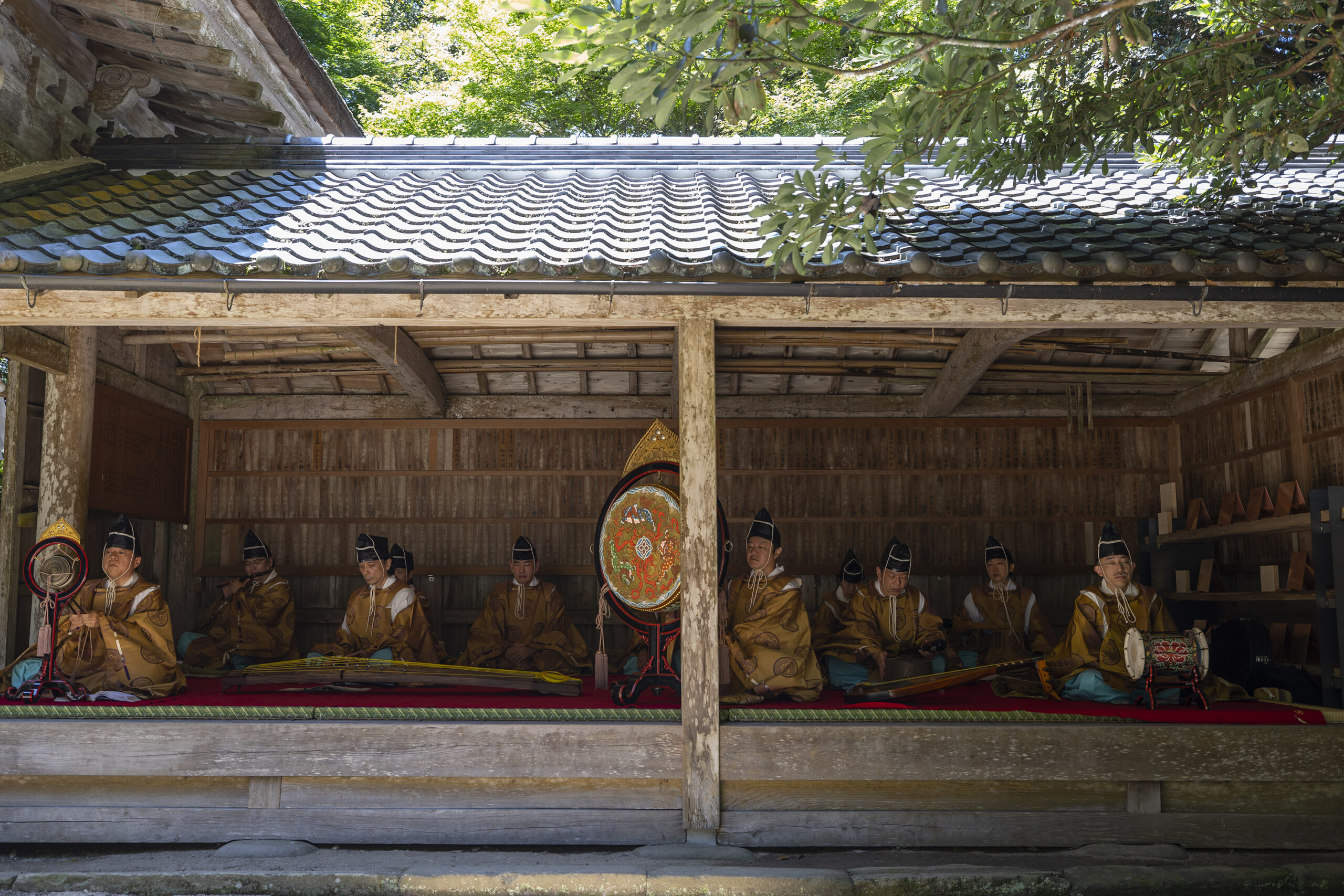
Gagaku Performance
Gagaku—a form of ancient Japanese court music—is said to have originated 1,400 years ago when it was brought to the Yamato Imperial Court from China and the Korean Peninsula. This year marks the 1400th anniversary of the death of Prince Shotoku. After a dedication, Tennojigakuso Garyokai will perform on the stage of Takano shrine with commentary by Shinryu Ono (Vice President of the Tennojigakuso Garyokai.
